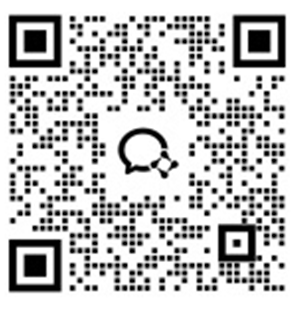

Captain Tsubasa: Dream Team features various shooting actions, each with different skill attributes. Different shooting actions need to be used in different situations to increase the chances of scoring goals. Redfinger Android Emulator has published this guide primarily to help players increase their goal-scoring chances.

Basic Attributes
Attack: The attack attribute encompasses various aspects of ball-kicking, including shooting power and the velocity at which the ball travels through the air. It also influences the energy expended when dribbling past opponents and the impact of stealing the ball. This attribute offers numerous bonuses and can be advantageous for forwards and strikers.
Defense: Defense plays a pivotal role in reducing the energy damage received and diminishing the opponent's ability to dribble past defenders. It enhances the effectiveness of blocking maneuvers and influences the energy levels of goalkeepers. Defense, too, presents a range of bonuses and serves as the fundamental attribute for defenders and goalkeepers.
Power: Primarily affecting shooting power, the power attribute determines the magnitude of energy-inflicted damage resulting from power-based dribbling. Additionally, it influences the goalkeeper's ability to judge the power behind incoming shots.
Speed: The speed attribute primarily governs movement speed and aids the goalkeeper in accurately assessing the velocity of oncoming balls.
Technique: Technique primarily impacts the rate at which shooting power accumulates and influences the judgment of skill-based balls.
Shooting Actions
Currently, apart from predetermined objectives, there exist generally three scoring methods in the game.
1.Power Judgment: This type of scoring occurs when the goalkeeper catches the ball, but it still goes into the net. It is the most commonly observed goal judgment. It triggers when the shooting power surpasses the remaining energy of the goalkeeper. If the shooting power is insufficient, it diminishes the energy level of the opposing goalkeeper. This forms the fundamental gameplay mechanic of the game, where constant shooting aims to deplete the goalkeeper's energy. The energy directly influences the goalkeeper's attributes, and as the energy decreases, it becomes easier to score goals. The goalkeeper's energy does not replenish automatically, but it can be partially restored by scoring a goal or when the opponent scores (certain passive skills allow energy replenishment).
2. Speed Judgment: This scoring method occurs when the ball directly enters the net or the goalkeeper fails to catch it. It relies on the base speed of the shooting action and the attacking attribute. It is more likely to happen with high attacking attributes since the goalkeeper's energy affects their catching ability. Therefore, if the goalkeeper's energy is relatively low, the likelihood of speed judgment increases. Speed judgment takes precedence over power judgment. If a speed goal can be scored, the goalkeeper catching animation does not occur.
3. Technique Judgment: This scoring method is characterized by the ball entering the net without any animation or the goalkeeper failing to catch it. It is influenced by the attributes of the shooter and is independent of shooting power. The primary distinction lies in the ball trajectory, with straight shots being rare and other trajectories being more common. Consequently, many people perceive various skills such as Tsubasa Ozora's "Miracle Drive Shot" and curved shots as less valuable. Technique judgment balls generally have lower shooting power evaluation, making them unsuitable for energy-consuming tactics. However, these balls possess special skills like "Precise Shot," which improves the ball trajectory. Since these balls are not affected by shooting power, it is possible to score directly against a full-energy phantom goalkeeper like Müller by strategically combining passive skills. The drawback is that if one cannot overpower the opponent, the low power of technique balls becomes more pronounced.

Shooting Action Attributes
The ball types are categorized into Power, Speed, Trajectory, Decay, and Range.
Power: This represents the base damage of the ball when shooting. The disparity is particularly noticeable at the SS level. SS-level balls have nearly twice the shooting power of S-level balls (because most SS-level balls are Super Shots or Combined Shots). However, SSS-level balls are only 20% stronger in base power compared to SS-level balls. The difference in basic damage between C, B, A, and S levels is 20%. Straight balls have the highest power judgment. For instance, when Hyuga's Tiger Shot and Tsubasa's Drive Shot are both executed in the penalty area, the Tiger Shot has a higher damage judgment than Tsubasa's shot, even though both have an A-level base damage. Therefore, straight balls are more suitable for offensive playstyles and power-oriented shooting power passive skills.
Speed: This refers to the velocity at which the ball travels and is influenced by the attacking attribute. Shooting will undergo a speed judgment by the opposing goalkeeper. Generally, it is challenging to achieve a speed judgment goal with a C-level flying speed. Even if the speed judgment fails, the power judgment will be triggered, so specific combinations with speed-based shooting are not necessary. The desire to attain a speed judgment in shooting is primarily influenced by the attacking attribute.
Trajectory: It is divided into various types, namely straight, drive, curve, snake, special, rising, and falling. Any ball that requires a specific trajectory cannot be shot in the penalty area; shooting in the penalty area always results in a straight ball. As mentioned earlier, straight balls have the highest power judgment, followed by speed, while technique judgment is very low. They are suitable for combinations with power attributes, shooting power, and are the easiest shots to deplete energy values. If the shooting power is high enough, they can also directly score goals.
Block Judgment: Shots will not be blocked by enemies in the front section of the shooting action; only enemies in the middle and back sections can block them. Blocking shots inside the penalty area is basically impossible.
Conclusion
Mastering the shooting actions and skills often determines the outcome of the game in Captain Tsubasa: Dream Team. If players do not have a thorough understanding of these fundamental knowledge, it will be challenging to become a skilled player in the game.